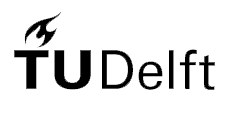

The research project NOMAD -NOmad MAnagement of urban Development - The complex value of temporary communities- explores the value of experimental temporary uses in vacant buildings.


NOMAD is studying the impact of experimental temporary uses in urban contexts by exploring different values.
Why and how temporary uses transform vacant spaces into lively places? The research project aims to understand:
• What values do urban nomads co-create and co-produce in vacant buildings and their surrounding neighbourhoods?
• How can these values be identified and assessed?
• What support mechanisms can be implemented to better facilitate temporary uses by urban communities?



Research methodology
and expected achievements
The core of the NOMAD research project is the investigation of values in experimental temporary uses and their impact on urban environments. The research methodology is structured into three distinct phases: Monitoring, Mapping and Upgrading, each one designed considering values from and for communities, buildings, and neighborhoods. To achieve this, an in-depth analysis of pioneering examples will start from some significant European cases in Rotterdam, Delft, Brussels, and Paris.
NOMAD integrates various data collection methods, both qualitative and quantitative. These include extensive literature reviews, dedicated fieldwork, the gathering of statistical data, and the conducting of interviews and surveys, which will inform findings through data analysis and mapping. Mapping techniques will visually capture the dynamics at play. This analysis is observing shifts in urban atmosphere and services. The case analyses conducted through monitoring and mapping aim to foster new experimental practices in temporary use. This is achieved by integrating values identified and analysed during co-design workshops, which are then combined with social multi-criteria evaluations. Consequently, the upgrade process involves a decision-making framework that incorporates co-design, evaluates alternatives, and takes into account the diverse interests and preferences of various actors and stakeholders involved in temporary use projects.
Since each temporary community is different and free to self-determine its own goals and values, the Monitor is conceived as an open tool to be adapted, the Map of each temporary use can vary accordingly, and Upgrade of temporary uses through a multi-actor decision-making process will follow a an adapted monitoring framework to evaluating alternatives according to site-specific needs.




Upgrade
stepping up the values of temporary uses.
The research started from the direct observation of some cases in the Netherlands, in Belgium and in France.


EVENTS INDEX
Reinventing the City
Date: 24 April 2024
Place: AMS Institute, Gebouw 027W, Kattenburgerstraat 5, 1018 JA Amsterdam
ERES (European Real Estate Society) 30th Annual Conference
Date: 26—29 June 2024
Place: University of Gdańsk (UG), Sopot & Gdańsk, Poland
36TH Association of European Schools Of Planning (AESOP) Annual Congress 2024, Paris, France
Date: 8—12 July 2024
Place: Sciences Po, 13 Rue de l'Université, 75007 Paris, France
The International Conference on Computer Science and its Applications - ICCSA 2024
Date: 1—4 July 2024
Place: Online
Temporary Use and Commons in Real Estate Management
/ Symposium
Date: 14 March 2025
Place: Berlagezaal 1, TU Delft Faculty of Architecture and the Built Environment, Julianalaan 134, 2628 BL, Delft, Netherlands

CONTACT




Nomad
Management of
Urban Development


Nomad is studying the impact of temporary communities in urban contexts by revealing the different values they produce transforming vacant space into a lively place. Based on this, this research project aims to reveal:
• What values do urban nomads co-create and co-produce in vacant buildings and their surrounding neighborhoods?
• How can these values be identified and represented spatially?
• What support mechanisms can be implemented to better facilitate temporary uses by urban communities?

Research methodology
and expected achievements
The core of the NOMAD research project is the investigation of values in experimental temporary uses and their impact on urban environments. The research methodology is structured into three distinct phases: Monitoring, Mapping and Upgrading, each one designed considering values from and for communities, buildings, and neighborhoods. To achieve this, an in-depth analysis of pioneering examples will start from some significant European cases in Rotterdam, Delft, Brussels, and Paris.
NOMAD integrates various data collection methods, both qualitative and quantitative. These include extensive literature reviews, dedicated fieldwork, the gathering of statistical data, and the conducting of interviews and surveys, which will inform findings through data analysis and mapping. Mapping techniques will visually capture the dynamics at play. This analysis is observing shifts in urban atmosphere and services. The case analyses conducted through monitoring and mapping aim to foster new experimental practices in temporary use. This is achieved by integrating values identified and analysed during co-design workshops, which are then combined with social multi-criteria evaluations. Consequently, the upgrade process involves a decision-making framework that incorporates co-design, evaluates alternatives, and takes into account the diverse interests and preferences of various actors and stakeholders involved in temporary use projects.
Since each temporary community is different and free to self-determine its own goals and values, the Monitor is conceived as an open tool to be adapted, the Map of each temporary use can vary accordingly, and Upgrade of temporary uses through a multi-actor decision-making process will follow a an adapted monitoring framework to evaluating alternatives according to site-specific needs.

Monitor
grasping the values of temporary uses.

Map
visualizing the values of temporary uses.

Upgrade
stepping up the values of temporary uses.


Events Index

Reinventing the City
Date: 24 April 2024
Place: AMS Institute, Gebouw 027W, Kattenburgerstraat 5, 1018 JA Amsterdam
ERES (European Real Estate Society) 30th Annual Conference
Date: 26—29 June 2024
Place: University of Gdańsk (UG), Sopot & Gdańsk, Poland
36TH Association of European Schools Of Planning (AESOP) Annual Congress 2024, Paris, France
Date: 8—12 July 2024
Place: Sciences Po, 13 Rue de l'Université, 75007 Paris, France
The International Conference on Computer Science and its Applications - ICCSA 2024
Date: 1—4 July 2024
Place: Online


Management of Urban Development
The complex value of temporary communities

(Researcher) Chiara Mazzarella
Tel: +31 (0)6 346 452 18
c.mazzarella-1@tudelft.nl
(Supervisor) Hilde Remøy
T +31 (0)6 392 512 29
h.t.remoy@tudelft.nl



